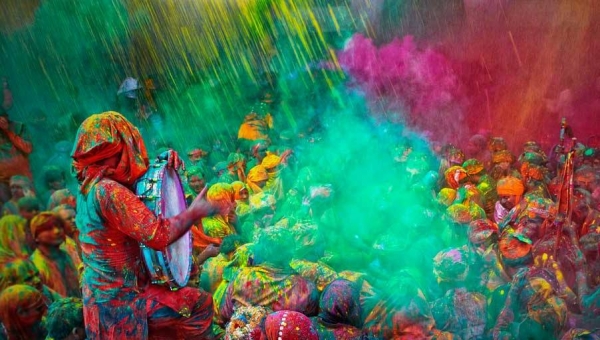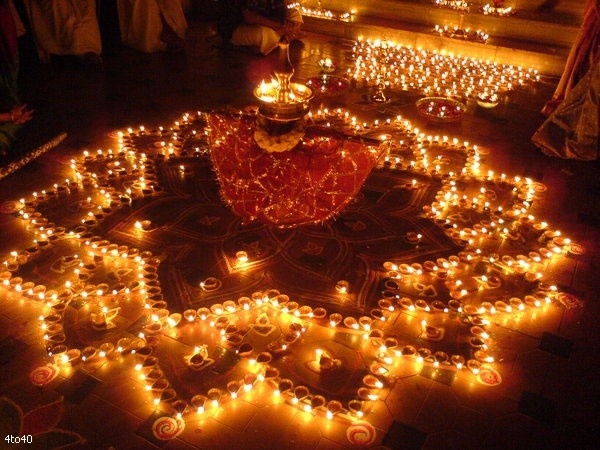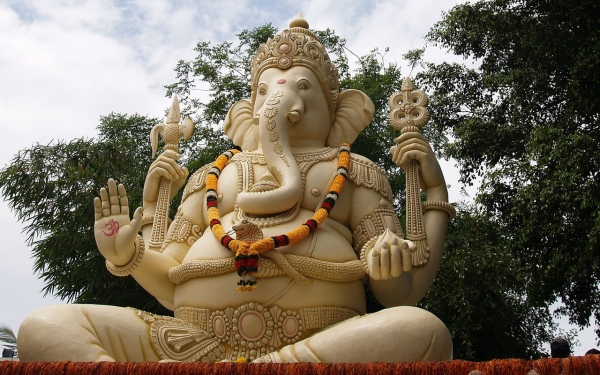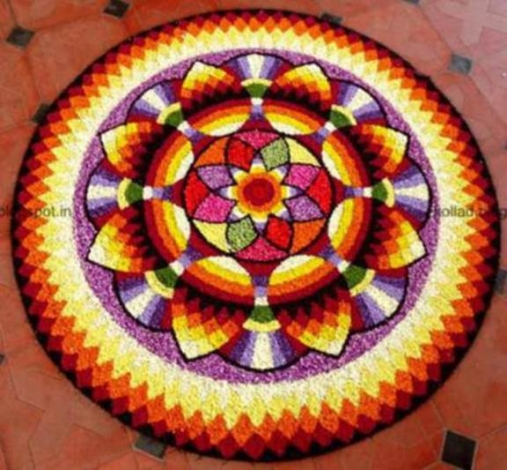Nu pierdeți cele mai bune locuri de muncă!
Abonează-te și săptămânal iți vom trimite un email cu ultimele locuri de muncă disponibile. Introdu adresa ta de email mai jos
India is a country that is hard to conceptualize. The diversity of religions, cultures, languages, and traditions is mind-boggling, yet they all coexist (not always peacefully) throughout the country. It is a place rich in mythology, spirituality, and color, which all combine to make one aspect of Indian life thrive: festivals.
There are many festivals throughout the year, each celebrated differently from place to place, but always with great enthusiasm. Most festivals revolve around a puja, which is an act of devotion or worship directed towards a god or goddess, usually in the form of offerings. Many festivals are of Hindu origin and are based around stories from the sacred texts, but the celebrations are a cause for people of all religions, classes, and backgrounds to come together and celebrate.
If you are traveling abroad in India, it is well worth your time to check out at least one of the many celebrations around the country. Some places are known for going all-out, and booking your train tickets around these events is worth it. Here’s a few of the most popular.
Holi
March
The Indian celebration of spring and the triumph of good over evil occurs all over the country after the first full moon in March. Holi is known as the Festival of Colors, and the popular images of crowds soaked in vibrant paints come from this two-day celebration. Holi is a Hindu festival, celebrated in honor of Lord Vishnu’s defeat of the demon Holika. Every city and town has its own unique way to celebrate, but the festivities are much more exuberant in the north, and they all revolve around color. Balloons filled with paint and colored powder are thrown and smeared over anyone who steps out into the street. Bonfires are burned the night before to ward off evil and commemorate the death of Holika.
Some places begin festivities earlier or later than others, so make sure to check the date in your location. In Delhi, the Holi Cow music festival occurs just outside the city featuring DJ’s, bands, and bhang lassis (bhang is a paste made from cannabis popular during the festival). If you are in India for Holi, make sure you’re in a good place to enjoy this festival.
Diwali
October/November
As Holi is to color, Diwali is to light. This festival, which is the biggest in the country, occurs in October or November each year and marks the start of winter. Diwali is another Hindi festival (celebrating the return of Lord Rama and his wife Sita after a battle with the demon Ravana), but nowadays Sikhs, Jains, and Buddhists all participate as well. Each day of the five day celebration has a different meaning and different rituals take place. Lakshmi puja, the third day, is the main celebration where people worship Lakshmi, the goddess of wealth and prosperity, and welcome her into their homes by lighting small clay lights and candles. Fireworks are set off in the street, and small gifts are exchanged. The fourth day, Govardhan puja, marks the New Year and the celebration of Lord Krishna. Leading up to this day, people will clean their homes and buy new things for their families.
Kerela is not known for its Diwali celebrations, but most other places in India participate. Like all festivals, each region will celebrate it a little differently so make sure you know the customs and traditions wherever you are.
Ganesh Chaturthi
August
Ganesha is the well-loved elephant-headed god, and his festival to commemorate his birth is celebrated in late August. Millions of devotees erect elaborate statues which, on the last day of the festival (which varies in length from place to place) are marched to the sea to be submerged in water. The statues are made in advanced specifically for the festival, and they range in size from a few inches (to be displayed in homes) to 25 feet (which are placed on raised platforms on the street for everyone to enjoy), and they are elaborately decorated in red shawls and sandal paste. Towns compete to display the most beautiful statues. Offerings of sweets are placed around the idols.
Ganesha is the god of removing obstacles, usually spiritual obstacles. The offerings and prayers directed towards him during this festival are done to bring good fortune into households. This festival is celebrated with the most exuberance in Mumbai.
Onam
September
Onam is the harvest festival of Kerala that occurs in the month of September. The celebration occurs as a homecoming for King Mahabali, the mythical ruler who was expelled from earth and sentenced to a life in hell. Every year, Mahabali returns to Kerala to ensure that his people are safe and happy. Onam is one of the most culturally expressive festivals in India, and it is unique to the state of Kerala. The festival occurs over the course of ten days, but preparations begin weeks in advance. Intricate flower arrangements called pookalams are placed on doorsteps, and rituals involving the god Vamana occur throughout the festival. Food is a huge aspect of Onam and there are feasts and elaborate dinners every night.
The celebrations of Onam bring in a lot of tourism, and the main attraction is the snake boat races. Kerala is famous for its backwaters; canals and rivers that flow into the swampy coastline, forming an intricate system of navigable waterways. Every year during Onam, deep-hulled rowing boats (named snake boats because of their similarity to a cobra’s raised head) race through the backwaters to the beat of traditional drums. If you are planning to visit Kerala, it’s worth it to plan your itinerary around this festival.
If you’re booking your train tickets in advance during your trip traveling abroad in India, be sure you check out these and other amazing celebrations happening all over the country. The rich, ancient culture of the country comes alive during festivals, and they are a time of joy and excitement for Indian people. It’s worth it to plan your trip around witnessing as many of them as you can.
Sign in to publish a comment




Be the first to comment on this post.